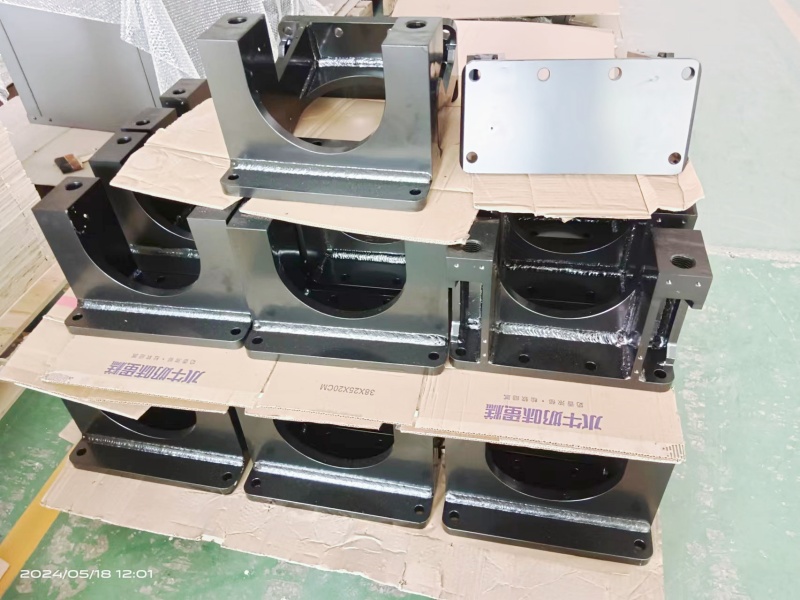E-coating and powder coating are both widely used finishing processes that provide protective and decorative coatings on metal surfaces. Each has its strengths and is better suited for specific applications depending on factors like material, environment, desired finish, and budget. Here’s a comparison of the two processes:
1. Process Overview
- E-Coating (Electrophoretic Coating):
- Involves immersing the part in a water-based solution containing paint particles and applying an electric current to deposit the paint evenly onto the surface.
- The coating is then cured in an oven to create a hard, durable finish.
- Powder Coating:
- Involves applying a dry powder to the part using an electrostatic spray gun. The powder adheres to the electrically charged surface.
- The part is then heated in an oven, where the powder melts and flows out to form a uniform, durable coating.
2. Material Compatibility
- E-Coating: Suitable for a wide range of conductive materials, including steel, aluminum, and other metals. It provides good coverage on complex shapes and recessed areas.
- Powder Coating: Also applicable to various metals, including steel, aluminum, and galvanized steel. It is effective on parts of all shapes and sizes, but special care may be needed for complex geometries.
3. Corrosion Resistance
- E-Coating: Offers excellent corrosion resistance, often used as a primer layer before a topcoat is applied. It provides a thin, uniform protective layer that can reach recessed areas.
- Powder Coating: Provides a thicker, more robust protective layer that is excellent for corrosion resistance, especially in outdoor environments. However, it may not be as effective in coating very complex or tight spaces compared to E-coating.
4. Durability and Wear Resistance
- E-Coating: Generally provides a thinner coating compared to powder coating but still offers good durability and protection. It may require a topcoat for additional protection in harsh environments.
- Powder Coating: Known for its thick, tough, and durable finish. It provides excellent abrasion resistance and is highly resistant to chipping, scratching, and fading.
5. Appearance and Aesthetics
- E-Coating: Typically results in a smooth, uniform finish. It is often used as a primer, with a wide range of color options available for topcoats.
- Powder Coating: Offers a broader range of finishes, including matte, gloss, textured, and metallic. It provides excellent aesthetic quality with vibrant, long-lasting colors.
6. Thickness Control
- E-Coating: Produces a relatively thin and uniform coating. The thickness is easily controlled, making it suitable for applications where precision is required.
- Powder Coating: Generally results in a thicker coating. While thickness can be controlled to some extent, it is typically more challenging to achieve very thin coatings compared to E-coating.
7. Environmental and Safety Considerations
- E-Coating: An environmentally friendly process with low levels of volatile organic compounds (VOCs). The water-based nature of E-coating minimizes waste and emissions.
- Powder Coating: Also environmentally friendly, as it does not involve solvents or VOCs. Overspray can be collected and reused, reducing waste.
8. Cost Considerations
- E-Coating: Generally cost-effective, especially for parts with complex shapes that require uniform coverage.
- Powder Coating: May be more expensive due to the need for specialized equipment and thicker coatings. However, it can be cost-effective for large parts or high-volume production.
When to Use E-Coating
- For applications requiring thin, uniform coatings, especially as a primer.
- For complex geometries with recesses and tight areas that need consistent coverage.
- When high corrosion resistance is needed.
When to Use Powder Coating
- For parts that require a thicker, more durable finish with excellent wear and impact resistance.
- When a specific aesthetic, color, or finish is desired, especially for decorative or outdoor applications.
- For applications where a robust, weather-resistant coating is crucial.
Conclusion: The choice between E-coating and powder coating depends on the specific requirements of the application. E-coating excels in providing thin, uniform coatings with excellent corrosion resistance, making it ideal for complex shapes and as a primer. Powder coating, on the other hand, offers a thicker, more durable finish with a wide range of aesthetic options, making it suitable for decorative and outdoor applications.
Related Links:
sheet metal fabrication company china | china sheet metal forming manufacturers | china sheet metal fabrication manufacturers | china custom sheet metal parts | china sheet metal fabrication companies | china sheet metal fabrication factory | sheet metal fabrication companies in china | sheet metal parts manufacturing china | china sheet metal parts manufacturers | china sheet metal parts company | china metal enclosure manufacturers | china aluminum sheet metal fabrication manufacturers | china sheet metal manufacturing manufacturers

Leave a Reply